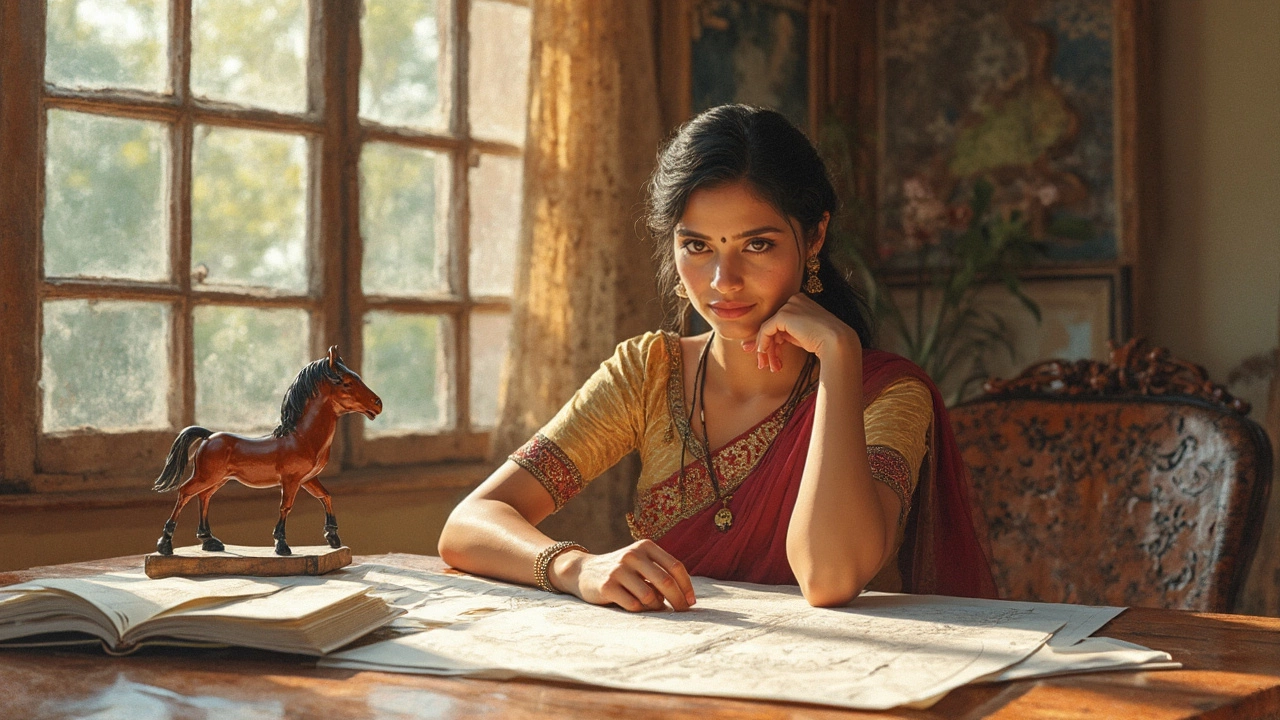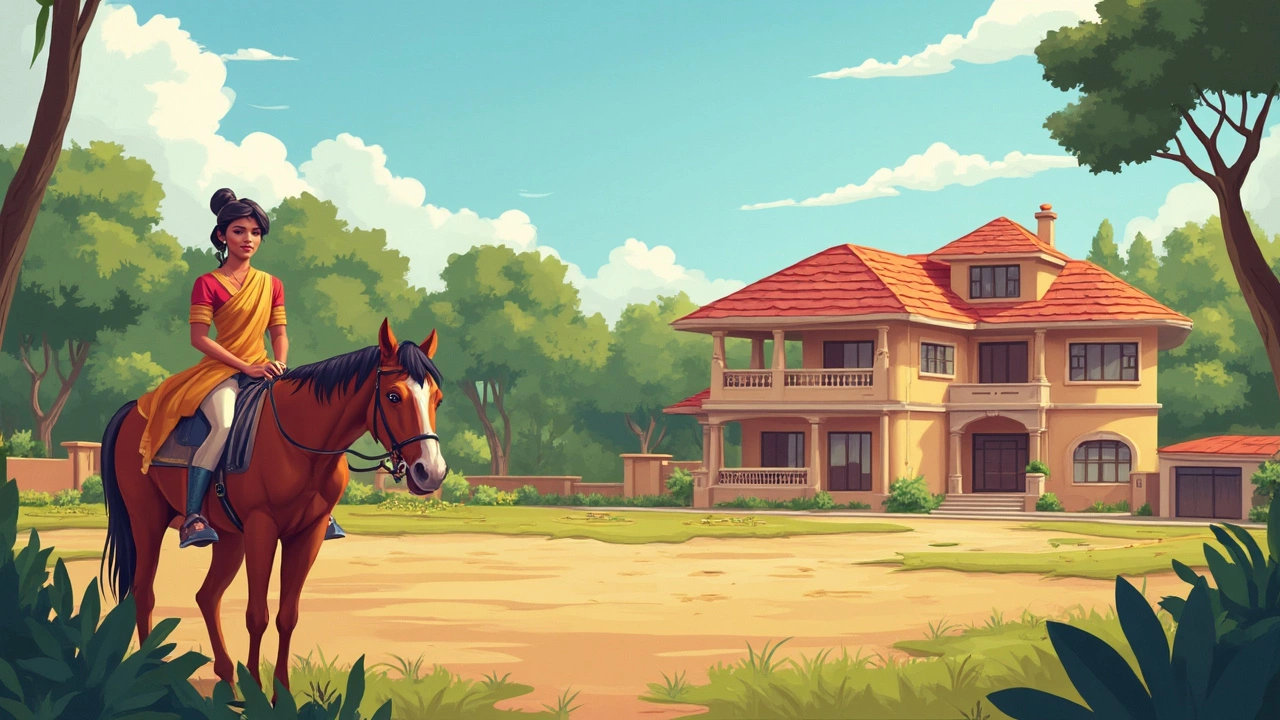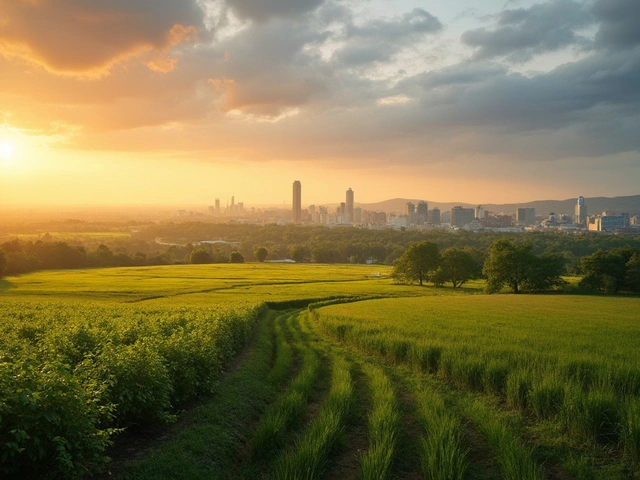Ever dreamt about having a horse roaming in your backyard? Cool idea, but let's get straight—finding out how much land that horse actually needs is key if you’re eyeing a villa with land.
The old rule of thumb is one acre per horse. Sounds simple, right? But here’s the catch: not all acres are made equal. The grass, soil, and even how much your horse moves all change the game big time.
If you just check villa listings for 'plenty of land,' you might run into trouble. Sometimes, what looks like room for two or three horses is really just enough for one happy, healthy horse—and that's only if the pasture's in top shape. Sticking too many horses on a small lot? You’ll destroy the grass, rack up hay bills, and deal with frustrated animals. Not fun.
- Why Land Size Matters for Horses
- The Magic Number: Recommended Acres per Horse
- Land Quality and Layout: What Makes a Difference
- Beyond the Paddock: Facilities and Neighbors
- Tips for Villa Buyers Shopping for Horse Property
Why Land Size Matters for Horses
Horses are big animals with big needs. You can’t just stick them in a small backyard and expect them to be fine. First off, they need enough space to move freely. Keeping a horse in a cramped area can lead to stress, boredom, and even health problems like joint stiffness or obesity.
When you look at horse property, remember: grass isn’t just decoration. Horses love to graze and spend most of their day nibbling on pasture. Not only is grass their “fast food,” but steady grazing actually helps their digestion. If your land size is too small, horses will eat the grass faster than it can regrow. Before long, you’re left with mud, weeds, and a lot of extra costs for hay and repairs.
Space also means fewer problems with mud, parasites, and disease. Horses forced into tight spaces stand in dirty, worn-down paddocks, which can lead to hoof infections and spreading germs. Good-sized land lets you rotate the fields, so sections can rest and regrow while horses enjoy fresh grass elsewhere. That’s the secret behind happy, healthy animals.
Let’s not forget about the social side. Horses are herd animals. With enough land, they have room to play, bond, and avoid bossy herd mates if they need space. Not enough acreage? You’ll see biting, kicking, and more horse drama than you bargained for.
If you’re buying a villa with land for a horse property, those extra acres are more than just bragging rights—they’re what keeps your animals healthy and your land in good shape. Squeeze too many horses onto too few acres and you’ll end up dealing with problems instead of enjoying peaceful rides and a neat property.
The Magic Number: Recommended Acres per Horse
So what’s the real story when someone asks, “How many acres do you need for a horse?” In the U.S., the standard advice is about one to two acres of good pasture per horse. This isn’t just a random guess. Princeton University’s ag studies, along with several equine associations, landed on this range after looking at what keeps a horse healthy and a pasture from turning into a mud pit.
Here’s the deal—more isn’t just better for your horse, it saves you stress. With enough space, horses graze naturally and the grass has a chance to recover. Not enough? You’re stuck constantly reseeding, dealing with mud, and buying in way more hay.
- For a single horse, aim for 1 to 2 acres if the pasture is lush and well-maintained.
- Two horses need at least 2 acres, and three will push you over that minimum.
- If your land is dry, rocky, or mostly weeds, you’ll need more space or plan on feeding hay almost year-round.
Some states and municipalities require a minimum acreage per horse for residential properties, especially in popular equestrian areas. Always check local zoning before finalizing a villa purchase.
| Number of Horses | Recommended Acres (Good Pasture) | Recommended Acres (Poor Pasture) |
|---|---|---|
| 1 | 1-2 | 2-3 |
| 2 | 2-3 | 3-5 |
| 3 | 3-4 | 5-7 |
Bottom line? Don’t get fooled by glossy villa ads showing huge lots without mentioning pasture quality. The math matters, and that old saying—'one acre per horse'—is a healthy, proven limit for most situations. Stick with it, and both your horse and your land will thank you.
The phrase acres per horse isn’t just popular with realtors, it’s the number you’ll use all the time when weighing horse properties against your budget and daily chores.

Land Quality and Layout: What Makes a Difference
You could have five acres and still deal with bored, muddy horses if the land isn’t set up right. Quality always beats size. Buying a villa? Don’t just focus on how much space you see on paper. Check what’s actually usable for a horse.
First up: check the pasture. Good pasture has mixed grasses, few weeds, and drains well. Hard, rocky, or swampy ground won’t just disappoint your horse—it’ll drive up your feed bills fast. Here’s a quick window into what makes land horse-friendly:
- Grass Cover: If the land is packed with green grass (not weeds), horses can graze for longer, saving you money.
- Drainage: Water shouldn’t pool for days after rain. Horses with wet hooves get nasty problems like thrush.
- Soil Type: Sandy soils drain well but dry out. Heavy clay gets muddy and compacts too quickly. Most villa buyers find loamy soils are the sweet spot.
- Shade and Shelter: Look for mature trees or spots to put up a shelter. Horses need to get out of the sun or wind sometimes.
Now layout—think flow. Don’t make your horse cross a driveway or squeeze through tight gates just to graze. A paddock doesn’t help much if it’s chopped up by fences (or isn’t close to water or the barn).
Here’s what you really don’t want: all your land stuck on a hillside. Horses can graze on slopes, but anything too steep risks injury or erosion. Level spots are gold for feeding and riding.
Check this quick comparison of common land types on properties:
| Land Type | Pros | Cons |
|---|---|---|
| Level Loam Pasture | Good grazing, easy maintenance | Can get overgrazed fast if crowded |
| Rolling Grassland | Natural drainage, some shelter | Watch for uneven footing |
| Wooded Acres | Shade and some wind protection | Not much grass, ticks and bugs |
| Steep/Hilly Land | Challenging riding, scenic | Hard on horses’ legs, tricky maintenance |
| Low-Lying/Swampy Areas | Cheap to buy | Poor drainage, hoof problems |
At the end of the day, don’t get swept up by the word 'acre.' The way the land is set up, how it drains, and how easy it is to split into grazing and living zones matter more. For acres per horse, the real answer comes down to how much of your property works for the animal, not just the paperwork.
Beyond the Paddock: Facilities and Neighbors
Having enough land is step one, but it doesn't end there. A proper horse setup goes way beyond just acreage. You need certain facilities to keep your horse healthy, safe, and happy. Skimping here can lead to big headaches—or even bigger bills down the line.
First up, let’s talk basics. Every horse owner needs a sturdy shelter. Yeah, many horses love being outdoors, but during storms or summer heat, a run-in shed or barn is non-negotiable. Water is another must. One horse can easily drink between 5 and 10 gallons a day, even more in scorching weather. No one wants to haul buckets back and forth all year.
Then there’s fencing. Barbed wire is bad news—stick to wood, vinyl, or no-climb wire. Good fencing doesn’t just keep your horse in, it keeps unwanted animals out. And don’t forget storage. You’ll need a dry spot for hay and feed, which is usually more space than newbie owners expect.
One thing villa buyers often miss: riding space. If you don’t have an arena, is there a flat spot for training? If not, you’ll be trailering your horse to ride—so plan for a trailer parking space too.
- Sturdy shelter (run-in shed or barn)
- Automatic or heated waterers
- Safe fencing—no barbed wire
- Hay and feed storage
- Muck storage or disposal plan
- Space for riding or training
Your neighbors matter just as much as your setup. Are they horse people too, or just looking for a quiet backyard? Too close to a main road—or worse, a busy neighborhood—and you’ve got new risks. Neighbors who use lots of fireworks, keep aggressive dogs, or have lots of little kids can turn peaceful horse life into a circus fast.
Here’s a quick look at what real horse-friendly properties near villas usually offer:
| Facility | Minimum Recommended |
|---|---|
| Shelter space per horse | 12x12 ft stall, or 3-sided 10x12 ft run-in |
| Fencing height | Minimum 4.5 ft |
| Water source | Year-round, frost-proof if cold climate |
| Feed/Hay storage | At least 100 sq ft per ton of hay |
| Riding arena | 75x150 ft (recommended for one horse) |
Real estate listings sometimes toss around words like "equestrian-ready" without much backup. Kick the tires—ask for proof of what’s really on-site. And chat with neighbors before buying. Happy horses—and happy horse owners—depend on more than just green acres.
If you see a villa for sale and you want a true acres per horse setup, dig into the details before you buy. Every facility matters.

Tips for Villa Buyers Shopping for Horse Property
Looking at villas for sale with dreams of your horse grazing outside? There are real differences between a place that just looks "country" and a true horse-friendly property.
- acres per horse is rule #1. Real estate agents love to say a villa “has lots of land,” but check the actual map. If you have two horses, you’ll almost always want at least 2 acres—ideally more for grazing rotation, shelter, and a buffer from neighbors.
- Check the land quality. Walk the field. Grass should cover most of the area—skip properties with lots of weeds, swampy patches, or too much slope. If it's dry and green in mid-summer, even better.
- Ask about water supply. Horses drink 5-10 gallons a day. Does the villa have working outdoor faucets, or will you haul buckets?
- Fencing matters. Solid wood or safe wire fencing is a big plus because making those upgrades later gets pricey fast.
- Look for existing sheds or barns. Having a weatherproof shelter is not just nice—it’s a basic health need. If there’s no shelter, budget for the cost of building one (which can easily top $5,000 for something simple).
Here’s a quick table to help you spot key features when you’re comparing villas:
| Feature | Must-Have | Nice-to-Have |
|---|---|---|
| Acreage | 1+ acre per horse | Room for paddock rotation |
| Grass Quality | Green, well-covered | Mixed grass types |
| Water | Outdoor tap, strong flow | Automatic troughs |
| Shelter | Barn/stable or 3-sided shed | Insulated horse barn |
| Fencing | Safe, horse-friendly | Electric fencing options |
If you’re serious about buying, bring in a horse-savvy friend or even a local equine vet to walk the property with you. They’ll spot drainage, hay storage issues, or things you might never think about (like how far the manure pile is from the barn—it matters). Careful now saves you big headaches later.
Another thing buyers sometimes miss: check local zoning and regulations. Just because there's land doesn't mean you're legally allowed to keep horses full-time. Always ask for paperwork, or call the local municipality before signing anything.






